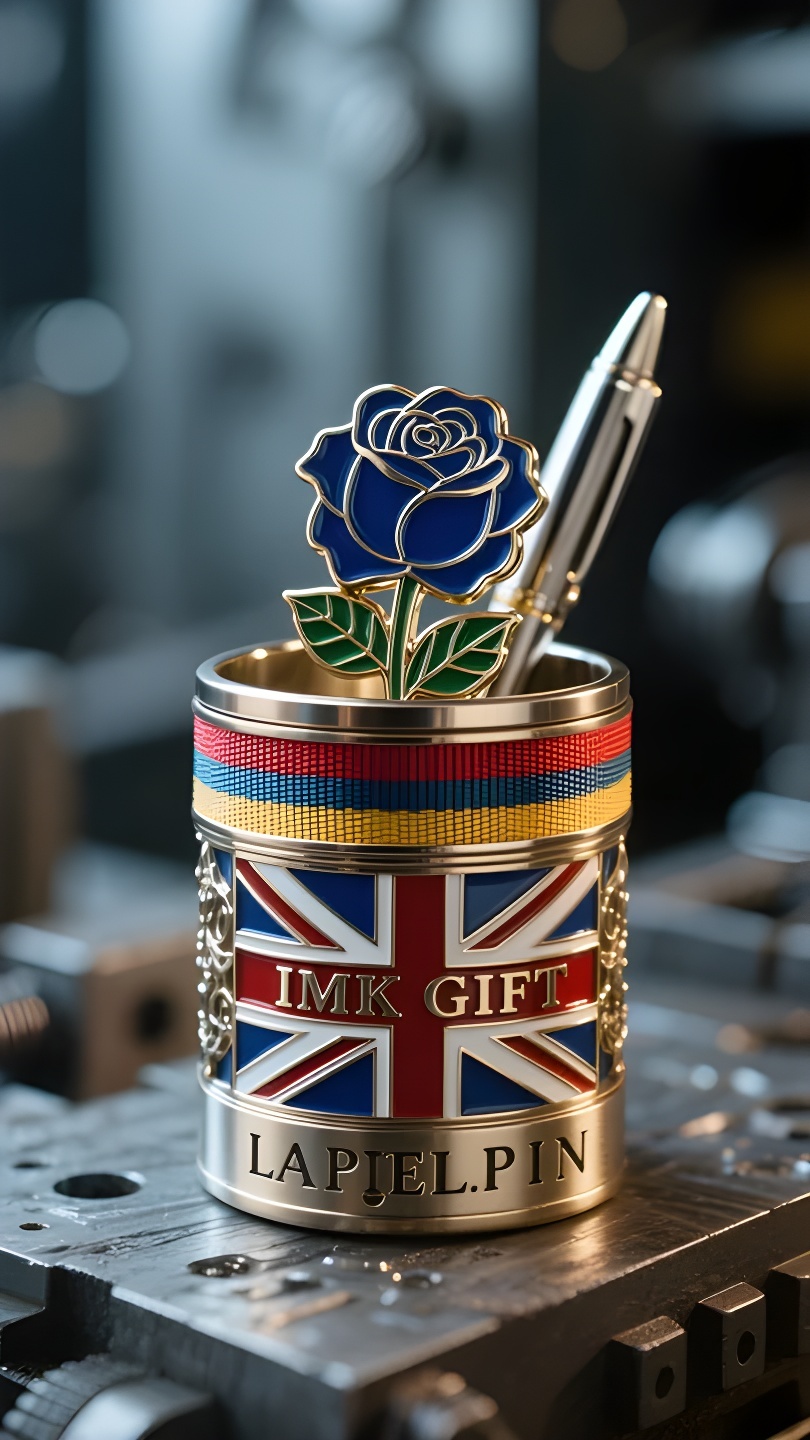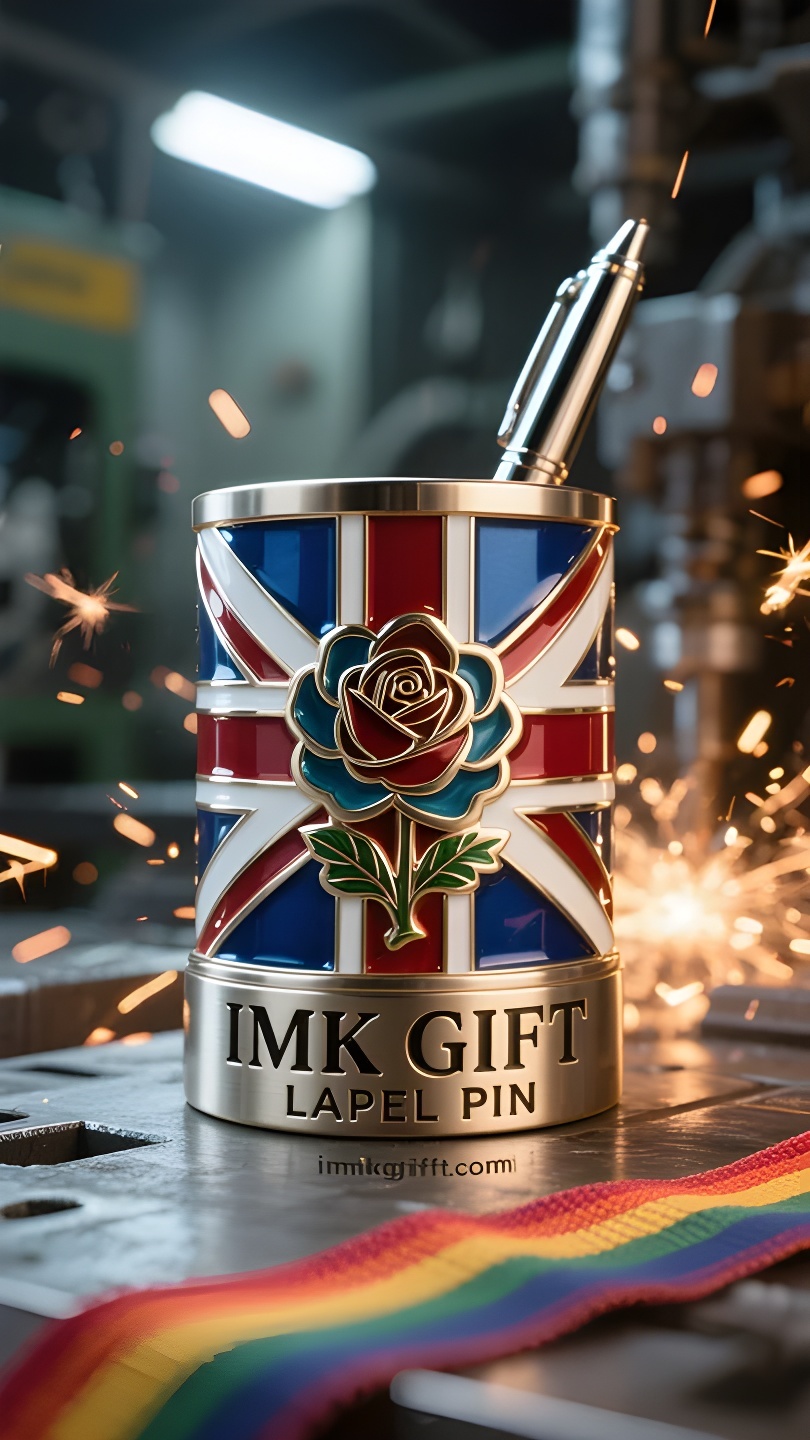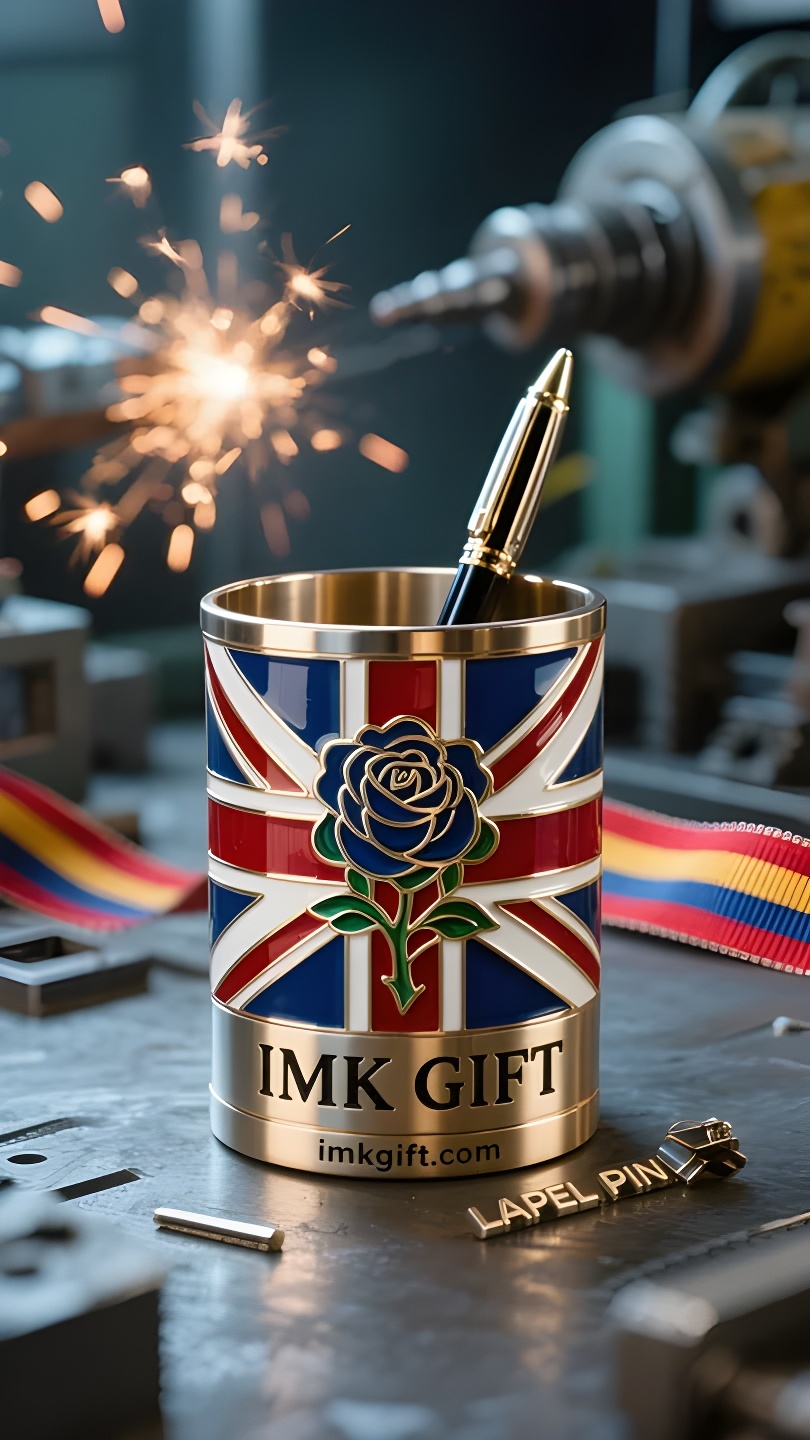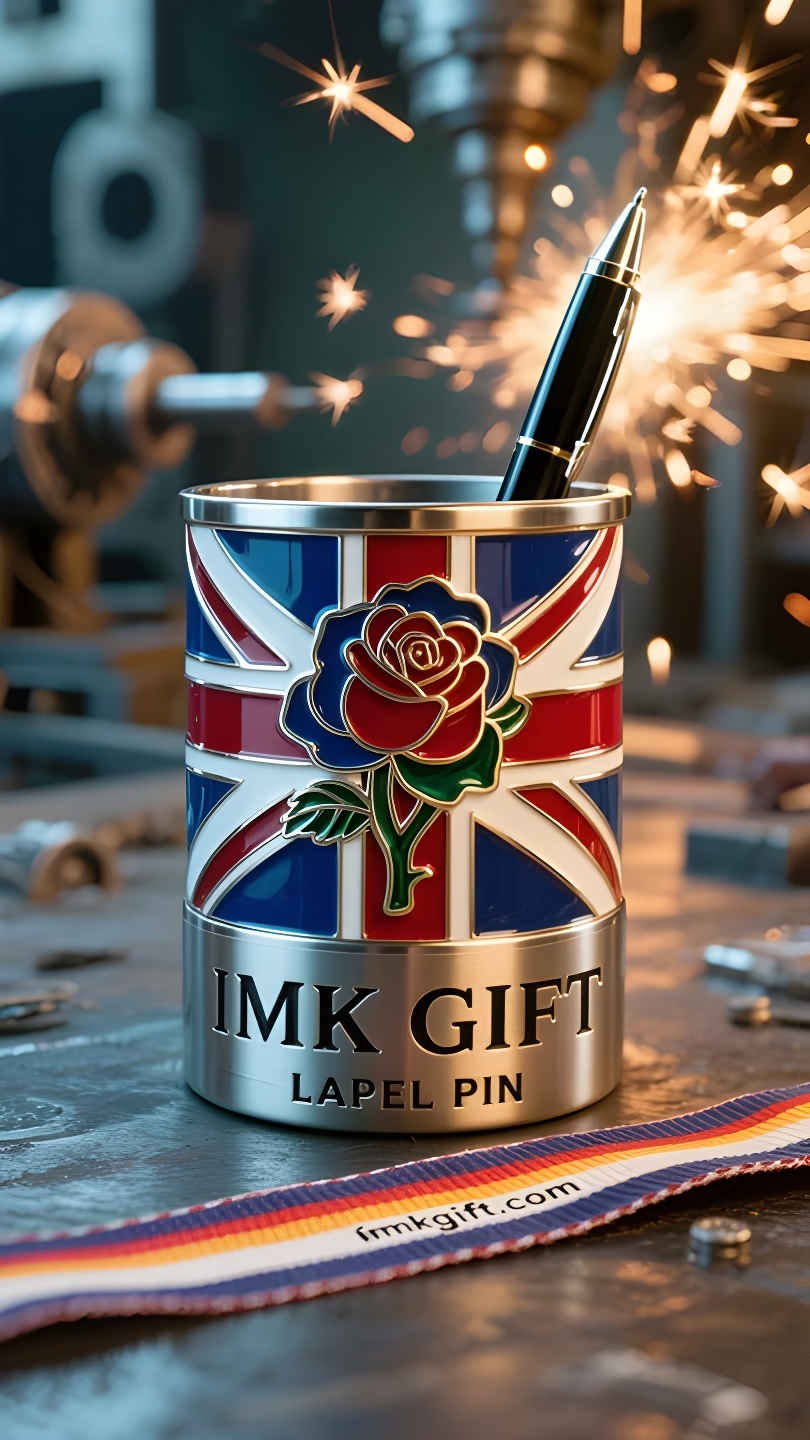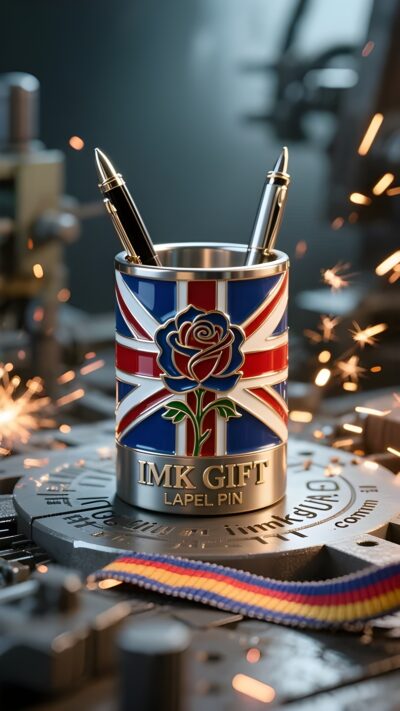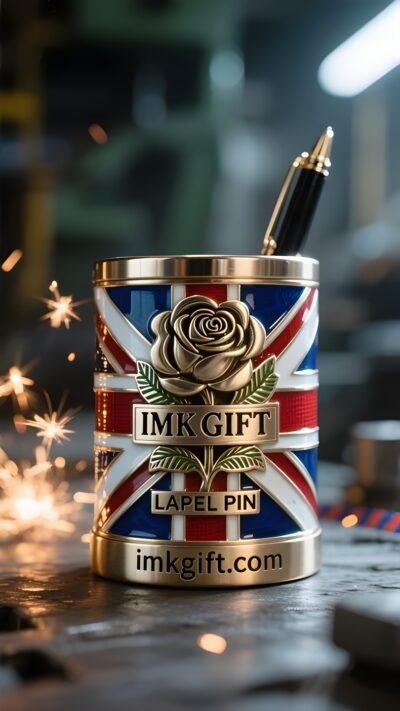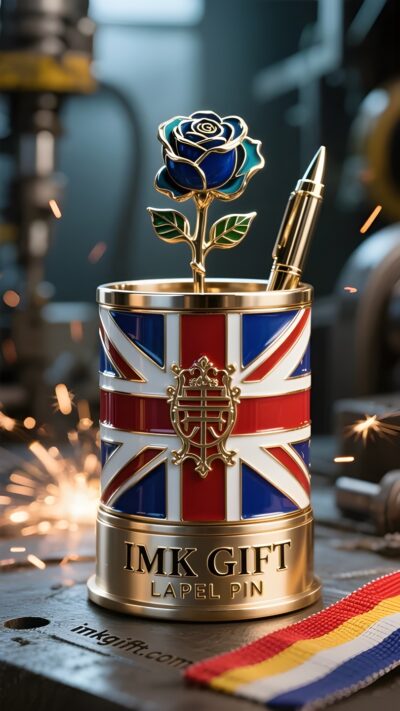in990-The-rose-that-never-falls-on-the-tip-of-the-pen-the-code-of-civilization-in-the-Duo-Rose-pen-holder
▼
On the streets of London in April, the flag of St. George spreads its bloody cross in the spring breeze, and England’s patron saint’s day is approaching. In the glass display case of the British Museum, an 18th-century Tudor rose gilded pen holder is emitting a warm luster – red and white roses interweave and bloom on the surface of the pen holder, just like the historical metaphor of the Tudor dynasty ending the “War of the Roses”. The casting process of this pen holder hides a mystery: the ten rose petals correspond to the six traditional counties and four patron saints of England, and the gilded lines outline the secret outline of St. George’s cross. When Victorian scholars inserted the quill pen into it, the tip of the pen touched not only the ink bottle, but also the 800-year accumulation of civilization in England. The swordplay of the War of the Roses has long dissipated, but the eternal embrace of the red and white roses on the pen holder always reminds us that true glory lies not in conquest, but in reconciliation; immortal civilization lies not in destruction, but in inheritance. Today, the gilded pen holder in the State Banqueting Hall of Buckingham Palace is still witnessing the signing of historical documents. Every pen put into it is writing a new chapter of the spirit of Magna Carta – just like the St. George flag always guards this land, the Tudor Rose pen holder always carries the wisdom of national reconciliation. When our pen tip touches the paper, perhaps we should remember: the real weight of civilization is hidden in those objects that silently guard time.
Na ulicach Londynu w kwietniu flaga św. Jerzego rozpościera swój krwawy krzyż na wiosennym wietrze, a dzień patrona Anglii zbliża się. W szklanej gablocie British Museum, XVIII-wieczny obsadka do pióra Tudorów z pozłacaną różą emanuje ciepłym blaskiem – czerwone i białe róże przeplatają się i rozkwitają na powierzchni obsadki, zupełnie jak historyczna metafora dynastii Tudorów kończącej „Wojnę Dwóch Róż”. Proces odlewania tej obsadki do pióra kryje tajemnicę: dziesięć płatków róż odpowiada sześciu tradycyjnym hrabstwom i czterem świętym patronom Anglii, a pozłacane linie wyznaczają tajny zarys krzyża św. Jerzego. Kiedy wiktoriańscy uczeni włożyli do niej gęsie pióro, czubek pióra dotknął nie tylko kałamarza, ale także 800-letniej akumulacji cywilizacji w Anglii. Szermierka Wojny Dwóch Róż dawno się rozwiała, ale wieczny uścisk czerwonych i białych róż na obsadce do pióra zawsze przypomina nam, że prawdziwa chwała nie leży w podboju, ale w pojednaniu; nieśmiertelna cywilizacja nie leży w zniszczeniu, ale w dziedziczeniu. Dziś pozłacana obsadka do pióra w Sali Bankietowej Pałacu Buckingham wciąż jest świadkiem podpisywania historycznych dokumentów. Każde włożone do niej pióro pisze nowy rozdział ducha Wielkiej Karty Swobód – tak jak flaga św. Jerzego zawsze strzeże tej ziemi, obsadka do pióra z Różą Tudorów zawsze niesie mądrość narodowego pojednania. Kiedy czubek naszego pióra dotyka papieru, być może powinniśmy pamiętać: prawdziwy ciężar cywilizacji ukryty jest w tych przedmiotach, które cicho strzegą czasu.
四月的伦敦街头,圣乔治旗在春风中舒展着血色十字,英格兰的守护神节即将到来。而在大英博物馆的玻璃展柜中,一枚十八世纪的铎玫瑰鎏金笔筒正泛着温润光泽——红白双色玫瑰在笔筒表面交织绽放,恰如都铎王朝终结”玫瑰战争”的历史隐喻。
这枚笔筒的铸造工艺暗藏玄机:十片玫瑰花瓣对应英格兰六大传统郡与四大守护圣徒,鎏金纹路则勾勒出圣乔治十字的隐秘轮廓。当维多利亚时代的学者将鹅毛笔插入其中,笔尖触及的不仅是墨水瓶,更是英格兰八百年的文明积淀。玫瑰战争的刀光剑影早已消散,但红白玫瑰在笔筒上的永恒相拥,始终提醒着:真正的荣耀不在征服,而在和解;不朽的文明不在摧毁,而在传承。
如今,白金汉宫国宴厅的鎏金笔筒仍在见证历史文件的签署。每一支放入其中的钢笔,都在续写着大宪章精神的新篇章——就像圣乔治旗永远守护着这片土地,铎玫瑰笔筒始终承载着民族和解的智慧。当我们的笔尖触碰纸面时,或许该记得:文明真正的重量,就藏在那些静默守护时光的器物里。
▼
Contact Us
📞 Tel: +0086-760-85286839
📧 Email: sales3@imkgift.com

